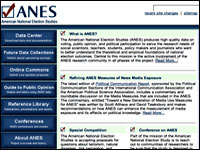Our young people are already part of our national story—but most don’t realize it. Any effective survey course must show students how they are part of the enduring debate that is American history. Too often, students see history as remote, settled, and irrelevant. Our effectiveness as teachers should not be measured by students’ mastery of disconnected facts and dates, but by how well we kindle their natural curiosity—curiosity about who they are and what kind of American they will become. It starts with an idea.
Colonial Williamsburg recently launched The Idea of America, a high school history curriculum intended to equip students with analytical skills in a historical framework instilling a shared sense of belonging and citizenship. When students can make connections on a gut level with distant episodes in our history, they have a genuine stake in our society. They do this by looking at American history as an enduring debate. The debate is about how to balance the values that we as Americans hold most sacred: law and ethics, unity and diversity, private wealth and common wealth, freedom and equality. Since no value taken to its extreme is workable in a republic, citizens must work together to strike the right balance.
For example, Americans believe in private wealth—in reaping the fruits of one’s own labor and owning property. But we also believe in the common wealth—that some resources must be shared for the good of us all. We know that if everything of value were held in common, democracy could not thrive. Yet we also know that if all resources were in private hands, people (and democracy itself) would suffer. So we debate wherever we gather: in political groups and community organizations, at social gatherings and places of worship, over the water cooler at work, or across the dining room table.
Using this approach students see how debates that began in colonial days shift, evolve, and continue today. By examining how previous generations of citizens grappled with the issues, students see that they too have a role in shaping the events of their time. They have a stake—more to gain—in looking at how we got to this point. The spirited debate over who should bear the cost of the national road two hundred years ago is the health care debate of today. The issues are worlds apart, of course, but they still depend on citizens figuring out how to balance these core American values. We cannot resist asking ourselves what position, given our feelings about certain values, we would have taken back then and what position we should take today. And the debate goes on.
